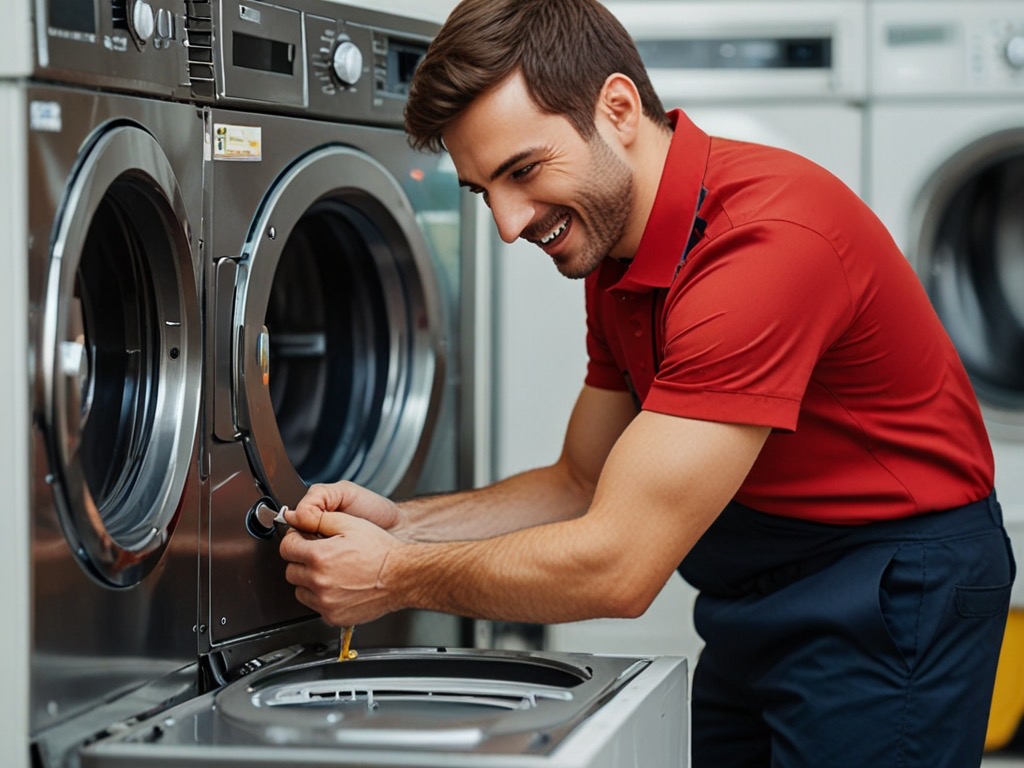Washing machines are essential appliances in our homes, making laundry day a lot easier and more efficient. However, like all machines, they are prone to wear and tear. One of the common issues that many users face is damaged or broken cords connected to buttons and indicators. These cords are crucial for the proper functioning of your washing machine’s control panel, affecting everything from cycle selection to indicator lights.
Symptoms of Damaged or Broken Cords
Identifying the symptoms of damaged or broken cords can save you time and prevent further issues. Here are some common signs to look for:
- Non-Responsive Buttons: If pressing a button doesn’t elicit any response, it may indicate that the cord connecting that button to the control board is damaged. This can disrupt your ability to select cycles, start or stop the machine, or access other vital functions.
⠀
- Erratic Behavior: If the machine operates unpredictably, such as starting or stopping at random times or showing incorrect indicator lights, there could be a loose connection due to damaged cords.
⠀
- Visible Damage: Sometimes, the problem is apparent. If you can visually inspect the wires and see fraying, breaks, or corrosion, it’s time to address the issue. Exposed wires can also pose a safety hazard, leading to electrical shorts or fire risks.
⠀
- Unusual Noises: If your washing machine starts making strange noises, it might be due to cords moving around within the control panel or motor area. This can indicate a need for immediate inspection.
⠀
Why Cords Get Damaged
⠀
Several factors contribute to the wear and tear of washing machine cords:
⠀
- Age of the Appliance: As washing machines age, the materials in the cords can degrade. Frequent use can also contribute to wear, leading to eventual damage.
⠀
- Improper Use: Pulling on cords when unplugging the machine or using excessive force can cause wear and breakage.
⠀
- Moisture and Corrosion: Washing machines operate in moist environments, and moisture can lead to corrosion of the wires, affecting their functionality.
⠀
- Manufacturing Defects: In some cases, manufacturers may use inferior materials, leading to premature failure of cords.
Repairing or Replacing Cords
⠀
When you notice symptoms of damaged cords, it’s crucial to take action quickly. You have two primary options: repair or replace.
⠀
– Repair: If the damage is minor, such as a frayed wire, a professional technician may be able to splice the wire or cover it with electrical tape. However, this is a temporary fix and may not hold up over time.
⠀
– Replacement: In cases of severe damage or multiple cords being affected, replacing the damaged cords is often the best solution. This ensures your washing machine operates safely and effectively. A professional technician can quickly replace the necessary cords and restore your machine to proper working order.
⠀
DIY vs. Professional Repair
⠀
While some homeowners may feel comfortable attempting to repair damaged cords themselves, it’s generally recommended to seek professional assistance. Here’s why:
⠀
– Safety Concerns: Dealing with electrical components can be dangerous, especially if you lack experience. A professional technician understands the safety protocols and can avoid hazards.
⠀
– Correct Diagnosis: A professional can accurately diagnose the problem, ensuring that all issues are addressed. What seems like a simple cord problem may be indicative of a more complex issue within the machine.
⠀
– Guaranteed Work: Most appliance repair services offer warranties on their work. This means if the issue recurs, they will return to fix it at no additional charge.
⠀
Preventing Cord Damage
⠀
To minimize the risk of damaged or broken cords in the future, consider the following preventive measures:
⠀
- Gentle Use: Be gentle when pressing buttons and avoid using excessive force when unplugging the machine.
⠀
- Regular Maintenance: Schedule regular maintenance checks with a professional. This can catch potential issues before they become significant problems.
⠀
- Keep it Dry: Ensure that the area around your washing machine is well-ventilated to reduce moisture buildup.
⠀
- Avoid Overloading: Overloading your washing machine can strain its components, including the cords. Always follow the manufacturer’s guidelines for load sizes.
⠀
Dealing with damaged or broken cords of buttons and indicators in your washing machine is not only frustrating but can also hinder your laundry routine. By recognizing the signs of damage early and seeking professional help, you can ensure your appliance remains in excellent working condition. If you suspect issues with your washing machine’s cords, don’t hesitate to act.
⠀
For reliable and efficient repair services, contact Home Appliance Service Center today! Our team of experienced technicians is ready to assist you with all your washing machine needs.
⠀
Contact us
 619-928-5000
619-928-5000  Request Service
Request Service 
